
The American Saddlebred is a horse breed from the United States. This breed is referred to as the "Horse America Made". Descended from riding-type horses bred at the time of the American Revolution, the American Saddlebred includes the Narragansett Pacer, Canadian Pacer, Morgan and Thoroughbred among its ancestors. Developed into its modern type in Kentucky, it was once known as the "Kentucky Saddler" and used extensively as an officer's mount in the American Civil War. In 1891, a breed registry was formed in the United States. Throughout the 20th century, the breed's popularity continued to grow in the United States, and exports began to South Africa and Great Britain. Since the formation of the US registry, almost 250,000 American Saddlebreds have been registered and can now be found around the world, with separate breed registries established in Great Britain, Australia, continental Europe, and southern Africa.

The Tennessee Walking Horse or Tennessee Walker is a breed of gaited horse known for its unique four-beat running-walk and flashy movement. It was originally developed as a riding horse on farms and plantations in the American South. It is a popular riding horse due to its calm disposition, smooth gaits and sure-footedness. The Tennessee Walking Horse is often seen in the show ring, but is also popular as a pleasure and trail riding horse using both English and Western equipment. Tennessee Walkers are also seen in movies, television, and other entertainment.
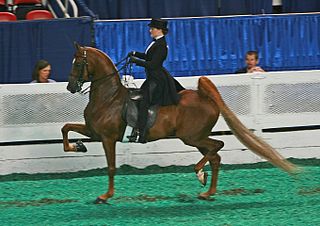
Saddle seat is a style of horse riding within the category of English riding that is designed to show off the high action of certain horse breeds. The style developed into its modern form in the United States, and is also seen in Canada and South Africa. To a much lesser extent, it is ridden with American horse breeds in Europe and Australia.
The Racking Horse is a horse breed derived from the Tennessee Walking Horse, recognized by the USDA in 1971. It is known for a distinctive singlefoot gait. In 1971, the Racking Horse Breeders' Association of America, headquartered in Decatur, Alabama, was formed as the breed registry. Its goal is to preserve the breed in a natural state with little or no artificial devices that enhance gait. The horse's tail is naturally raised without nicking or tail sets. Some classes allow special shoes that enhance action, and a relatively newer class allows the use of chains, six ounces and under as action devices. The practice of soring, illegal under the Horse Protection Act of 1970, is also seen within the Racking Horse world. Since the breed's inception, about 80,000 Racking Horses have been registered, with the largest populations located in the US states of Alabama and Tennessee.
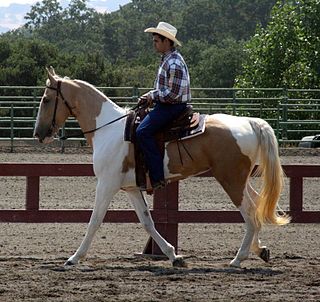
The Spotted Saddle Horse is a horse breed from the United States that was developed by crossing Spanish-American type gaited pinto ponies with gaited horse breeds, such as the Tennessee Walking Horse. The result was a colorful, smooth-gaited horse, used in the show ring and for pleasure and trail riding. Two registries have been created for the breed, one in 1979 and the other in 1985. The two have similar registration requirements, although one has an open stud book and the other is slightly more strict with regard to parentage requirements, having a semi-closed stud book. The Spotted Saddle Horse is a light riding horse, always pinto in color. Solid-colored foals from registered parents may be registered for identification purposes, so their pinto-colored foals have documented parentage. They always perform an ambling gait, rather than a trot, in addition to the gaits of walk and canter, performed by all breeds.
Soring, or "fixing", are methods to create unnaturally exaggerated movement in horses, such as the "big lick" gait in Tennessee Walking Horses. Soring practices include the application of any chemical, mechanical agent, or practice inflicted upon any limb of a horse, that can cause or be expected to cause the horse to suffer physical pain or distress when moving. This results in the horses picking up their front feet higher and faster than they would in their natural gait. Trainers use soring techniques to give a horse a highly animated gait quicker than through training. People who sore their horses believe it gives them a competitive edge over other horses in the show ring. However, soring is illegal in the United States under the Horse Protection Act of 1970. Tennessee Walking Horses are not allowed to be shown without passing a USDA and HPA inspection for soring and physical inspection; they are not allowed to have scars on their pastern as it is associated with soring. Other breeds that have a history of soring include the Racking Horse and the Spotted Saddle Horse.
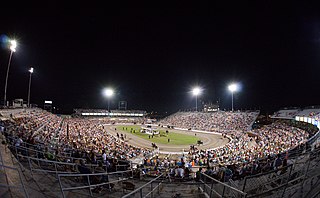
The Tennessee Walking Horse National Celebration (TWHNC), sometimes known as the Celebration, is the largest horse show for the Tennessee Walking Horse breed, and has been held annually in or near Shelbyville, Tennessee since its inception in 1939. The Celebration was conceived by Henry Davis, a horse trainer who along with several other horsemen, felt the Shelbyville area should have a festival or annual event. Although the Celebration was originally held in Wartrace, Tennessee, it moved to Shelbyville, the seat of Bedford County, a few years later. The Celebration spans 11 days and nights in late August and early September annually, and finishes with the crowning of the World Grand Champion Tennessee Walker on the Saturday night before Labor Day. The TWHNC draws an estimated 2,000 horses and 250,000 spectators to Shelbyville each year.
Strolling Jim (1936–1957) was the first Tennessee Walking Horse to become World Grand Champion of his breed. Since Strolling Jim's death, a restaurant, street, and an annual ultramarathon in his hometown of Wartrace, Tennessee have been named after him.
The Tennessee Walking Horse Breeders' and Exhibitors' Association is the oldest breed association for the Tennessee Walking Horse. It was founded in 1935 and is headquartered in Lewisburg, Tennessee. The association also runs the Tennessee Walking Horse Hall of Fame.
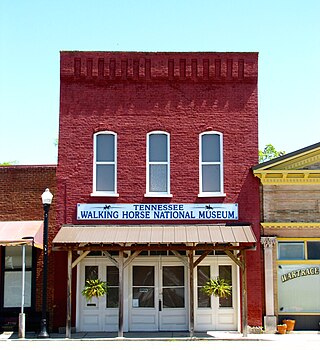
The Tennessee Walking Horse National Museum is the only museum dedicated entirely to the Tennessee Walking Horse. It is located in downtown Wartrace, Tennessee, and contains exhibits on all aspects of the Walking Horse industry.
The Spotted Saddle Horse Breeders' and Exhibitors' Association (SSHBEA) is an equestrian organization for the registration and promotion of the Spotted Saddle Horse breed. The SSHBEA is headquartered in Shelbyville, Tennessee.
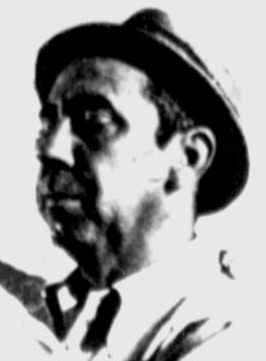
Emerson "Bud" Dunn was a Tennessee Walking Horse trainer from Kentucky who spent most of his career in northern Alabama. He trained horses for over forty years and won his first Tennessee Walking Horse World Grand Championship at age 74 with Dark Spirit's Rebel; at the time, he was the oldest rider to win the honor. He was inducted into the Tennessee Walking Horse Hall of Fame in 1987 and named trainer of the year in 1980 and 1991. In 1999 at age 81, Dunn surpassed his own record for the oldest winning rider by winning his second World Grand Championship, riding RPM. He died of a heart attack in January 2001.
Elizabeth Fay Sain, is a former Tennessee Walking Horse trainer and breeder from Tennessee. In 1966 she became the first woman to win the breed's World Grand Championship with the horse Shaker's Shocker.

Billie Nipper was an American artist who specialized in painting portraits of horses. Nipper, a native of Cleveland, Tennessee, painted every horse that won the Tennessee Walking Horse World Grand Championship from 1976 until her death. Besides Tennessee Walking Horses, she painted other breeds of horse, as well as landscapes. Her paintings were made into prints and transferred onto china and other objects. Nipper also bred horses, and her husband and son were horse trainers.
Honors is a Tennessee Walking Horse stallion who won his breed's World Grand Championship in 2016. He had previously won a Four-Year-Old World Championship in 2012. Honors has also been used for breeding.
Charles Emmett Brantley was a Tennessee Walking Horse breeder. He grew up on a farm in Coffee County, Tennessee and competed in the first Tennessee Walking Horse National Celebration. Besides breeding horses, he was a horse trainer for several years, but quit riding due to health issues. He was married to his wife Nellie for 70 years, and was inducted into both the Tennessee Walking Horse Hall of Fame and the Tennessee Sports Hall of Fame.
Wink Groover was an American Tennessee Walking Horse trainer who won the World Grand Championship in 1970 with the horse Ace's Sensation. Groover was also Trainer of the Year for 1970, and later served as a chairman for the National Horse Show Commission. Groover died in April 2010, at the age of 74.

The horse industry in Tennessee is the 6th largest in the United States, and over 3 million acres of Tennessee farmland are used for horse-related activities. The most popular breed in the state is the Tennessee Walking Horse - developed by crossing Thoroughbred, Morgan, Saddlebred, and Standardbred horses in the 19th and 20th centuries - and it became an official state symbol in 2000.
William Earl Bobo is a Tennessee Walking Horse trainer. He won the World Grand Championship at the Tennessee Walking Horse National Celebration in 2003 with the stallion The Whole Nine Yards. Bobo also showed the notable horse Rowdy Rev, who competed in the World Grand Championship several times but never won. Bobo has been named Trainer of the Year by the Walking Horse Trainers Association.
Pride's Generator (1975–2001) was a Tennessee Walking Horse who won three World Championships before being retired to breeding. Standing at stud first at S. W. Beech Stables and later at Waterfall Farms, he sired over 2,000 foals, of which two became World Grand Champions and over 100 became World Champions.








